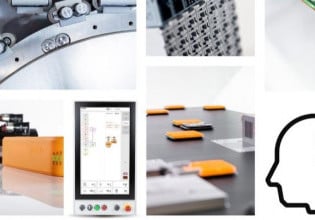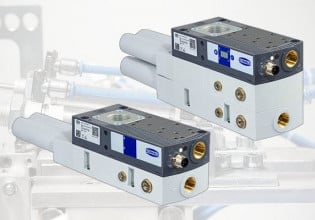SICK Releases LIDAR Sensor for Autonomous Mobile Robot Applications
SICK Sensors released its TiM2XX line of LiDAR sensors designed to work with autonomous mobile robots.
Light Detection and Ranging (LiDAR) is utilized in remote sensing applications.
Recently, it has expanded into autonomous vehicle and machine vision markets and will continue to find new markets in automation. To meet the demands of these markets, SICK Sensors released its TiM2XX line of LiDAR sensors.
Sick Releases New LiDAR Sensors
These sensors are designed explicitly for anti-collision applications in robotics and autonomous mobile robots (AMRs).

The TiM2XX sensor Image courtesy of SICK.
SICK AG has been developing sensors for the industry since 1946. Their sensors have been used in a diverse assortment of industries, from automotive manufacturing to luggage sensing in airports, to environmental compliance in chemical production.
SICK’s sensing technology is typically used for position sensing, particularly for logistics operations. One such application would be to ensure that pieces of luggage from multiple conveyors do not crash into each other.
SICK sensors have also been used with an automated parking robot for maximizing the space inside parking garages.
As AMRs become increasingly popular, manufacturers aim to make sensors smaller, lighter, cheaper, and more robust for use in many applications.
Key Features of the Sensor
For lightweight applications, the TiM240 LiDAR sensor weighs a mere 150 g (5.29 oz). These sensors are housed in a small package (75.8 mm x 79.7 mm x 60 mm, or 2.98 in x 3.14 in x 2.36 in).
The package itself is rated to IEC IP65, dust-tight and safe from occasional indoor water spray. This makes it suitable for many applications on the factory floor.

The TiM2XX sensor rage. Image courtesy of SICK.
The TiM2XX Series sensors can scan a large area, up to 240°, to 10 m (32.8 ft), scanning up to 200 m^2 (2152 ft^2).
In addition, these sensors can perform this measurement up to 15 Hz (15 times per second). The large sweep area, long-distance, and high scanning rate support fast-moving AMRs. The AMRs can sense workers from farther away and respond much more quickly with these LiDAR sensors.
Unique Data Capabilities
The data from these TiM2XX Series sensors can be used for motion control and discarded, or it can be transmitted via Ethernet for logistics and further analysis. The sensing and data transmission consumes only 2.9 W, meaning these sensors offer a lot of capability with very little power consumption. The lower power consumption makes them a prime candidate for AMRs, as the AMRs operate under battery power.
SICK promises that the new LiDAR sensors will deliver the signals required for accurate placement and collision avoidance for AMRs of the future.






